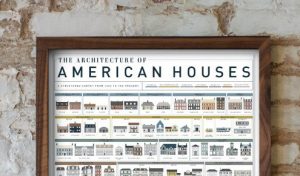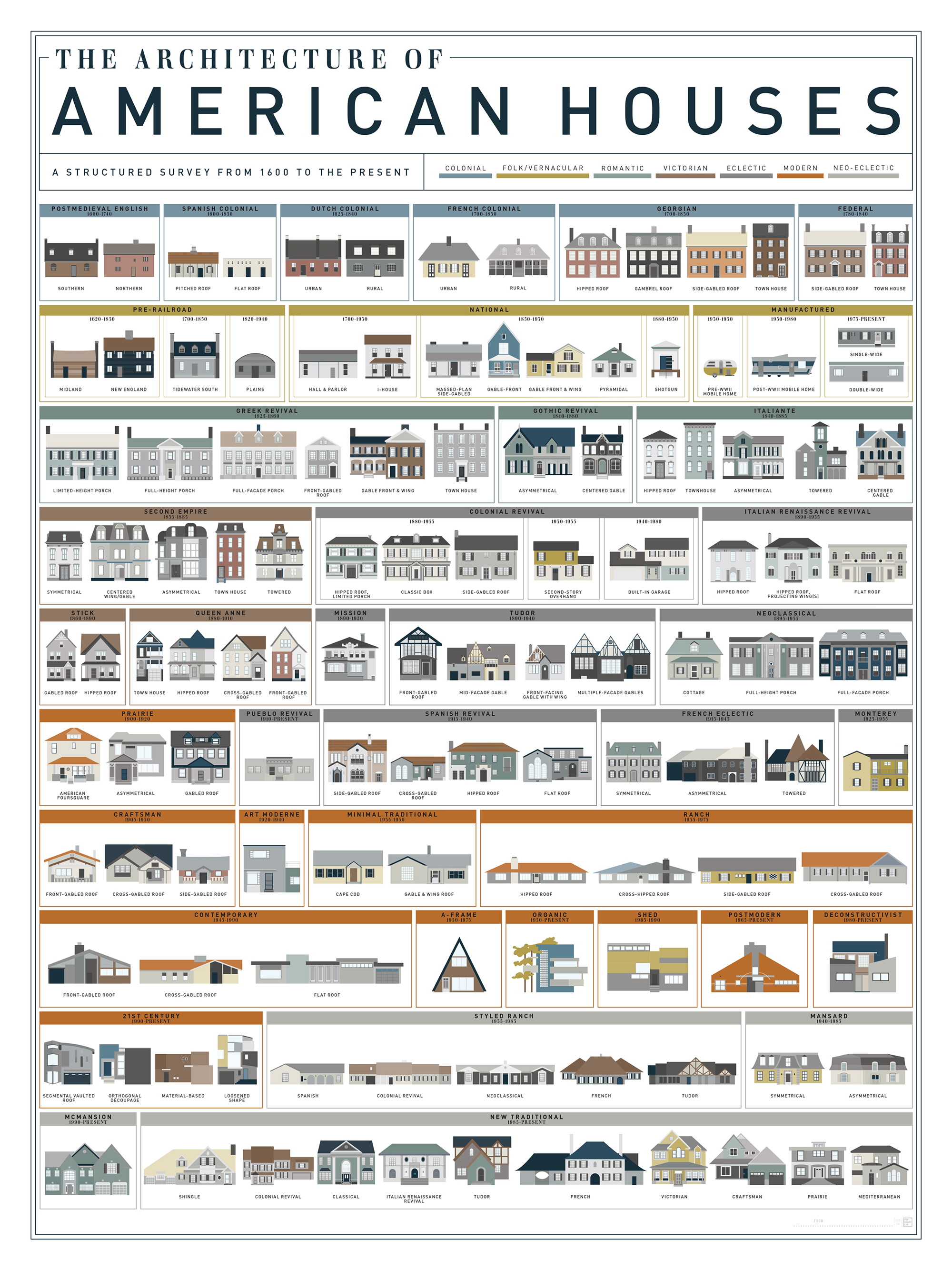Naming things helps us understand and keep track of them, so it should be no surprise that people regularly ask architects what “style” buildings fall into. Often there is no simple answer, but here are a few graphic design projects that can help you put architecture into its historical context and start to tease out stylistic influences.
 First, this poster from Pop Chart Lab began as an ambitious attempt to document vernacular architecture around the world. “After diving into the research,” say the poster’s creators, “it quickly became apparent that this wasn’t going to be feasible due to the volume of data.” Instead, they ended up focusing on single-family homes in the United States, settling on 121 hand-drawn houses representing urban and rural residential styles, including: Colonial, Romantic, Victorian, Eclectic, Modern, Neo-Eclectic with subsections such as Italian Renaissance Revival and Ranch.
First, this poster from Pop Chart Lab began as an ambitious attempt to document vernacular architecture around the world. “After diving into the research,” say the poster’s creators, “it quickly became apparent that this wasn’t going to be feasible due to the volume of data.” Instead, they ended up focusing on single-family homes in the United States, settling on 121 hand-drawn houses representing urban and rural residential styles, including: Colonial, Romantic, Victorian, Eclectic, Modern, Neo-Eclectic with subsections such as Italian Renaissance Revival and Ranch.

Next, an infographic from Part Select narrows the scope even further, featuring an array of popular European and American typologies. Their graphic goes in depth, too, listing off key details that help define and distinguish different styles like Tudor, Victorian and Craftsman.

Many dwellings do not fit these categories neatly, but knowing the parts can help you piece together a whole picture. Understanding architectural details and styles can give people a better sense of their everyday built environments, helping put architecture in context.
For further reading, you may also want to grab a copy of A Field Guide to American Houses. The book breaks down design types and details even further (particularly useful given the ways styles get intermixed).



Comments (8)
Share
very cool! although could still break this out further. A Chicago bungalow is quite different and distinctive from a California bungalow, for example.
And…. where’s McMansion? I don’t see McMansion on here. ;)
Awesome post.
McMansion is there on the bottom left. I thought it was a made-up term and was actually surprised to see it listed!
This is great. Is there a hi-res version of the chart?
Is it possible to have a combination of the above? I think I have a tudor cape cod.
Thank you for explaining to me that a colonial-style home is more common in the eastern united states and is usually brick or stone. For the last couple of weeks, I have been thinking that it is time to buy my first home! I want something that is going to fit my personality and style. I will have to look for homes in the area that look perfect!
Great design, this is how should every architectural cad design. Thanks for sharing this great effort.
I appreciate how you explained the different architectural designs of domestic houses. My husband and I are planning on building our own house, but we have yet to decide what style we want it in. I am in love with French Colonial-style homes with lots of greenery around the house, and I’m hoping I can persuade my husband to hire an architect who specializes in homes with a lot of natural elements in it.